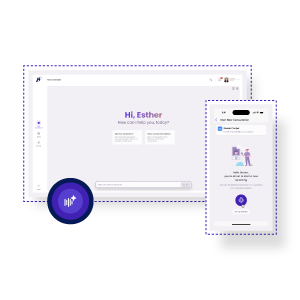More than two years after the COVID‑19 emergency officially ended, England’s backlog for routine hospital care is still piling up — and it is women who feel the squeeze the most.
Newly released NHS England figures show that women account for 57 % of all patients waiting for elective treatment, with gynaecology by far the largest single speciality on the list for working‑age adults.
Women Face the Longest Waits
Across every speciality in which a patient’s sex is recorded, women outnumber men both in raw numbers and in the likelihood of enduring a long delay. Nearly 3 in 5 women on the waiting list have already waited more than 18 weeks for an appointment or procedure, and they are also more likely than men to wait over a year.
For women aged 18 to 64, gynaecology alone represents 12 % of all active referral pathways. That translates into tens of thousands of people living with chronic pelvic pain, infertility complications or heavy menstrual bleeding while juggling careers, childcare and, increasingly, elder‑care responsibilities.
Professor Ranee Thakar, president of the Royal College of Obstetricians and Gynaecologists, warned that the trend is as harmful as it is predictable.
“Delays can lead to a need for more complex treatment and significantly impact women’s health, wellbeing, and daily lives,” she said, adding that women in England’s poorest neighbourhoods wait the longest — a reality that threatens to entrench existing health inequalities.
Working‑Age Adults Dominate the Queue
The backlog is not merely an issue for retirees. People aged 19 to 64 now make up 56 % of England’s entire elective waiting list — a figure that alarms business leaders who see staff missing shifts, scaling back hours or resigning altogether while they wait for treatment.
NHS analysts describe the pattern as a vicious cycle: untreated health problems suppress productivity, which in turn drags on economic growth and increases the tax burden needed to fund the National Health Service itself.
Deprivation and Ethnicity Widen the Gap
Geography and background remain powerful predictors of how fast a patient moves through the system. In England’s most deprived districts, 3.1 % of people had already waited more than a year to begin treatment at the end of June; the figure falls to 2.7 % in the wealthiest areas.
Ethnic disparities are equally stark. Only 58.2 % of Asian or Asian British patients were seen within 18 weeks, compared with 60.3 % of white British patients. The gap persists even after controlling for age and clinical priority.
Government Promises a Reset
Health and Social Care Secretary Wes Streeting welcomed the data release, quoting the old adage “Sunlight is the best disinfectant.” He argues that the 10‑year NHS plan announced last week will steer “billions of pounds to working‑class communities” through a new network of neighbourhood health centres. Pilot sites will start in towns and cities with the lowest healthy life expectancy.
Policy experts remain cautious. Siva Anandaciva, chief analyst at the King’s Fund, said the plan lacks the ambition and operational detail needed to dig out of a record backlog that hit 7.6 million pathways earlier this year.
How AI Can Turn Data Into Action
That is where HealthOrbit AI — the ambient clinical intelligence platform built for the NHS — steps in. The company’s voice‑enabled scribe already converts every consultation into structured, coded data that flows automatically into hospital electronic health records.
Because the note is captured and coded in seconds, clinicians finish their paperwork before the patient has even walked out the door. The platform also tags each episode with SNOMED concepts, wait‑time risk flags and referral urgency scores, creating a live data feed that managers can query without running a single spreadsheet macro.
- Faster triage: Built‑in analytics spotlight patients who risk deteriorating while they wait, allowing gynaecology teams to re‑sequence theatre lists before harm occurs.
- Equity lens: Dashboards can be filtered by postcode, deprivation index or ethnicity, helping trusts comply with NHS England’s new instruction to “identify and reduce unfair waits.”
- Staff relief: Automating clerical tasks frees nurses and junior doctors to spend more time in theatres and procedure suites, expanding capacity without burning out the workforce.
HealthOrbit AI is already live in half a dozen NHS pilots and is fully compliant with DTAC, DCB0129 and DSPT standards — a critical point given the sensitivity of reproductive‑health records.
Culture Change Still Required
Technology alone cannot solve what clinicians describe as the “last mile” problem: acting on alerts. The Mid Staffordshire scandal revealed that data without accountability leaves patients in peril; Chester’s neonatal tragedy showed that red flags can still languish in inboxes.
Yet AI offers a new advantage: the ability to surface early warnings in the same workflow clinicians use every day. A coloured badge next to a woman’s record can highlight an anaemia risk before surgery. A real‑time heat map can warn executives when gynaecology referrals spike after a cervical‑screening campaign.
The Road Ahead
For now, the numbers remain daunting. One in 20 women from England’s poorest towns still faces a year‑long wait for planned care. If history is a guide, delays will translate into heavier surgical caseloads, higher costs and avoidable suffering.
HealthOrbit AI’s founders believe the path forward is clear: Doctor‑led, AI‑powered and relentlessly transparent. Each consultation captured in structured data is a brick removed from the backlog and a step toward equity.
Hospitals using HealthOrbit AI have slashed clinical documentation time by up to 75 % and gained the real‑time insights they need to attack elective backlogs head‑on. Ready to see how ambient intelligence can shorten waits for the women who need it most? Book a demo with HealthOrbit AI today and turn raw data into faster, fairer care.




